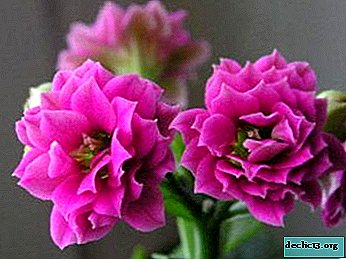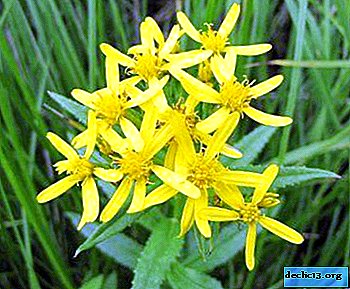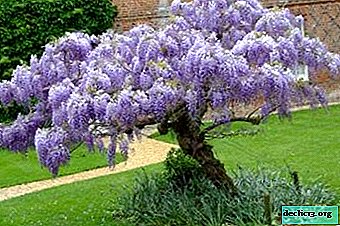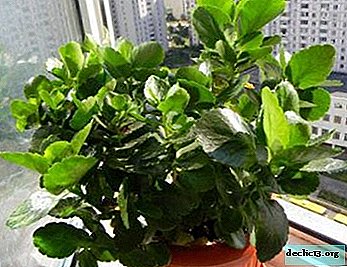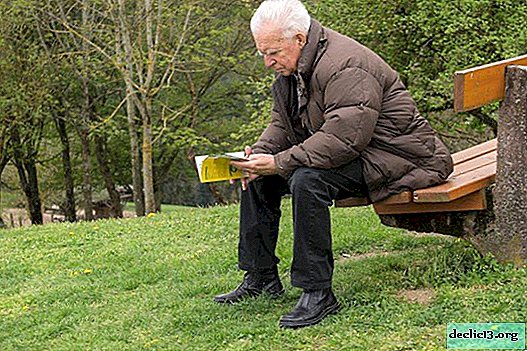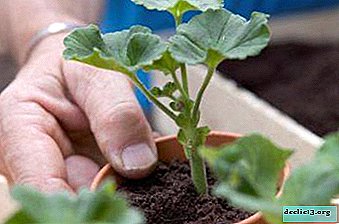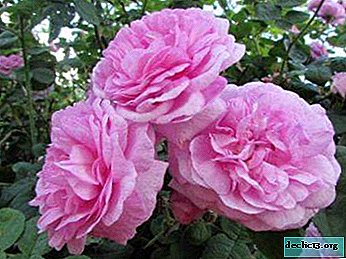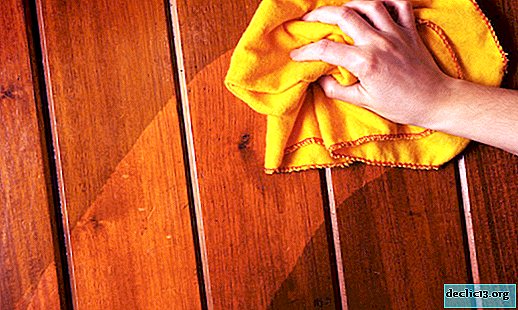Evergreen plant - Anthurium. Home care, diseases and pests and other helpful recommendations
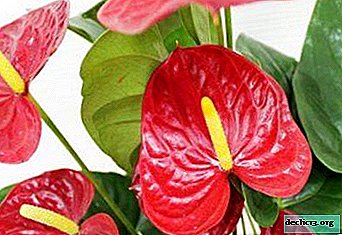 Anthurium (Anthurium) - an evergreen plant, belongs to the Aroid family. There are many types and varieties. Also called - flamingos, male happiness or a fiery tongue. His lovers of indoor plants appreciate his decorative qualities and beautiful flowering.
Anthurium (Anthurium) - an evergreen plant, belongs to the Aroid family. There are many types and varieties. Also called - flamingos, male happiness or a fiery tongue. His lovers of indoor plants appreciate his decorative qualities and beautiful flowering.
In the article we will tell you everything about a room flower called male happiness, what he loves and what care he needs at home, what diseases and pests can destroy the plant. And also show a photo of the plant.
How to care for the indoor flower of love male happiness (Anthurium)?
Temperature
The plant is quite thermophilic, but does not tolerate cold and draft. In spring and summer, the optimum temperature is 20-24 degrees. And in winter they maintain the temperature in the room from 16 to 18 degrees. It is under these conditions that the anthurium lays buds and then blooms profusely.
Important! At subzero temperatures does not survive.Watering
The flower loves plentiful, but not too frequent watering. In the summer, moisture is added every 3-4 days. At the same time, they do not allow water to accumulate in the pan; Otherwise, stagnation of moisture causes rotting of the roots and the plant dies. In winter, the frequency of watering is reduced to once a week.
Lighting
The plant loves bright diffused light, but without burning direct sunlight. therefore on especially hot days, a flower pot is shaded.
In winter, additional lighting in the form of fluorescent lamps is installed in the room. In summer, the flower is taken out to the balcony or to the garden, but it is protected from moisture, drafts and direct sunlight.
Location
The best place to place is considered the western and eastern window sills. There is not enough light on the north side, which adversely affects the state of anthurium. Cuttings become long, and flowering is sparse or completely absent. And on the southern windowsills, in order not to burn the leaves, the plant is constantly shaded from direct sunlight.
Pruning
Forming pruning is not required, since the anthurium independently creates a lush rosette of leaves. However, often an old plant ceases to bloom and loses its decorative appearance. Therefore, it is rejuvenated. For this, the apex with 2-3 roots is slightly shortened, leaving the internodes necessary for tillering on the trunk. Then it is rooted in the soil.
Priming
 The plant needs a loose, not too compacted, slightly acidic substrate. It is made independently; for this purpose, leafy and soddy soil is mixed in equal amounts with pieces of swamp moss. This composition optimally retains water and is similar to the natural soil in the homeland of the flower.
The plant needs a loose, not too compacted, slightly acidic substrate. It is made independently; for this purpose, leafy and soddy soil is mixed in equal amounts with pieces of swamp moss. This composition optimally retains water and is similar to the natural soil in the homeland of the flower.
But you can buy in the store and a special substrate for the aroid, which is mixed with bark or moss.
When buying, the composition of the substrate must be studied, it should not contain alkali, which adversely affects the plant.
Top dressing
Spend feeding in the spring-summer period twice a month. Use mineral or organic fertilizers.
And also some growers use universal compounds that contain both types of fertilizing. Their disadvantage is the high price.
From organic fertilize: mullein, bird droppings or humus. And of the mineral dressings used: Uniflor Bud, Azalea, Kemira Lux.
On a note. Fertilize the fertilizer in water, the dosage is halved than indicated on the package. Add top dressing to moist soil.Transfer
Young anthurium is transplanted annually in spring or summer, and an adult - every 3-4 years. If this is not done, then the flowers will quickly fade, and the leaves will turn black. The transplantation process consists of several steps:
- At the bottom of the pot, a drainage layer of expanded clay or pebbles will interfere.
- A small layer of soil is poured on top.
- The plant is abundantly watered so that when pulled out it does not damage the roots of the flower.
- Holding the base of the stems by transshipment, carefully transfer the plant to a new pot.
- Gently spread the roots and cover with soil. Then water abundantly.
The layer of earth above the roots should be at least 2 cm.
Pot
Anthurium needs a shallow but wide pot. It should correspond to the age of the plant - the more developed the root system, the more spacious the flowerpot is needed. It is best to buy from clay or plastic material. Do not plant in metal or glass containers, as they do not combine with the soil for the flower.
Wintering
At the beginning of autumn, watering and fertilizing are gradually reduced. The pot with the plant is moved away from batteries and other sources of heat. The optimum temperature is 16-18 degrees. With a lack of lighting, fluorescent lamps are installed. Near the flowerpot place any container with water or humidifiers. Watered once a week.
After the purchase
After purchase, anthurium is kept in quarantine for 2-3 weeks. During this time, he adapts to new conditions and easier to tolerate further transplantation.
The flower is planted in new soil, due to the fact that the store substrate is not suitable for constant maintenance. The pot is chosen no more than 2-3 cm than the previous one.After transplantation, the plant is looked after as a normal anthurium. But the first top dressing is carried out only after a month.
Photo
The photo shows how the flower looks male happiness.





What to do to bloom?
Anthurium is a very moody plant and may not bloom if not properly maintained. The main reasons for the lack of flowering are:
- Prolonged decrease in temperature. The pot with the plant is rearranged in a warm bright place.
- Constant overflow of soil. Regulate the irrigation mode and the water from the pan must be drained.
- High temperature at rest. The flower is transferred to a cooler room.
- Lack of light. Rearrange in a lighter place or install additional lighting.
- Improper soil composition. Transplanted into a new substrate.
- Dry indoor air. The plant is periodically sprayed or a container of water is placed next to the pot.
How to keep the plant in open ground?
Anthurium is a tropical plant native to South America. Grows in mountain subtropical forests. Therefore, in regions with a cold frosty climate, they are grown in a warm, well-lit room. Because of this, the plant is not planted in open ground, it dies there.
But in the spring and summer, the flower pot is taken out to the garden. At the same time, they are shaded from direct sunlight and protected from drafts.
Breeding
What is needed to propagate the flower?
Anthurium is propagated in several ways:
- Apical cuttings. In the spring, cuttings are cut. Then they are planted in a small transparent container with sand. Then watered and covered with a film. Periodically ventilate and moisturize. During rooting, keep at a temperature of 23-25 degrees. Upon reaching the roots 3-5 cm are transplanted into the ground.
- The seeds. Sowing material is sown in low containers with a light floral substrate. Sprinkle with earth on top, moisten and cover with glass. Seeds germinate at a temperature of 19-23 degrees for about 2 weeks. Seedlings dive as soon as they form two leaves. And then when reaching 5 cm planted in pots. Flowering of such plants begins in 3-4 years.
Diseases and Pests
With improper care, anthurium often gets sick. The main ailments of the plant are as follows:
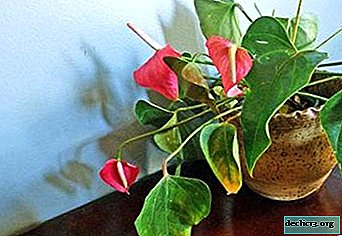 The leaves turn yellow. Indicates rotting of the roots. The flower is removed from the pot, damaged areas are removed, the cut place is sprinkled with crushed coal and transplanted into new soil.
The leaves turn yellow. Indicates rotting of the roots. The flower is removed from the pot, damaged areas are removed, the cut place is sprinkled with crushed coal and transplanted into new soil.- The tips of the leaves turn black. An excess of calcium in the feed. Review the composition of the fertilizer.
- Leaves curl. Due to direct sunlight, drafts or low light. Revise completely the conditions of detention.
- Leaves are covered with brown spots. The flower is flooded. Revise the watering regime.
Often the problem of the appearance of spots on the leaves is considered an attack of anthurium pests. The most serious damage is caused by spider mites, scutes and aphids. To combat them with severe infection, insecticidal drugs are used. And with a weak lesion, the leaves are rubbed with a garlic-soapy solution.
Watch a video about Anthurium pests. How to deal with them:
Anthurium is a beautiful plant that looks great in any interior. Caring for it will not cause much difficulty if you provide it with bright diffused light, proper watering and timely feeding.
Useful video
From the video you will learn how to care for Anthurium at home:

 The leaves turn yellow. Indicates rotting of the roots. The flower is removed from the pot, damaged areas are removed, the cut place is sprinkled with crushed coal and transplanted into new soil.
The leaves turn yellow. Indicates rotting of the roots. The flower is removed from the pot, damaged areas are removed, the cut place is sprinkled with crushed coal and transplanted into new soil.

